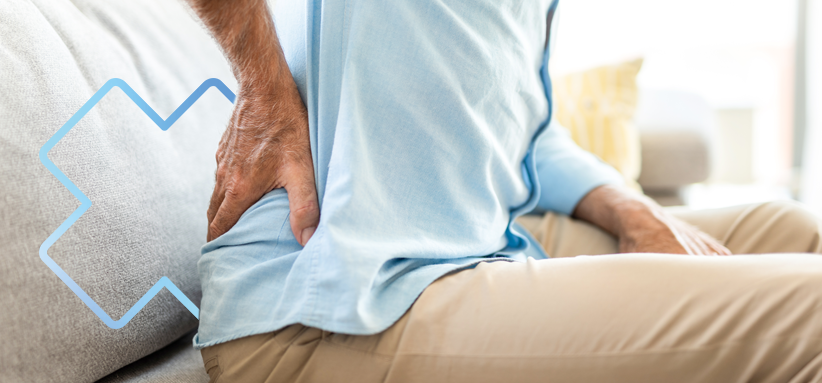Back pain is one of the leading causes of disability worldwide, affecting up to 80% of adults at some point in their lives (Statistics Canada). Whether related to poor posture, a wrong movement, or a degenerative condition, this pain can greatly impact quality of life. Discover the different types of back pain, their possible causes, and how to relieve them.

Definition and symptoms
Back pain can occur at different levels of the spine — thoracic (mid-back) or lumbar (lower back). It can be acute (less than 6 weeks), subacute (6 to 12 weeks), or chronic (more than 3 months).
Common symptoms include:
- Stiffness and muscle tension
- Dull or sharp pain
- Pain radiating to the legs
- Numbness or tingling
- Difficulty moving or performing certain tasks
Primary causes of back pain
Back pain can have multiple, sometimes combined, origins. The most common include:
- Prolonged or improper posture (at work or at home)
- Repetitive or poorly executed physical efforts
- Sedentary lifestyle, muscle weakness
- Sports or traumatic injuries (falls, accidents)
- Stress and associated muscle tension
- Aging and degenerative conditions
Certain specific conditions can also cause or worsen back pain:
Frequently asked questions (FAQ)
Should I stop all activity if I have back pain?
No. Complete rest is rarely recommended. Instead, we refer to relative rest, meaning light activity, as tolerated. Gradually resuming activities is beneficial for recovery.
Which is better: heat or cold?
Both can be helpful. Ice is often recommended in the acute phase to reduce inflammation. Heat can help relax the muscles. Apply for 15–20 minutes at a time.
Is an X-ray or MRI necessary?
Not in most cases. Imaging tests are only indicated if symptoms persist or worsen after several weeks.
When should surgery be considered?
Only in cases of persistent severe pain or neurological complications. Physiotherapy is generally sufficient for the majority of cases.
How is low back pain treated?
Expert advice: Keep moving
Even if the pain makes you want to rest, physical activity (light to moderate and adapted) is one of the best remedies. Moving helps maintain mobility, improve circulation, and strengthen stabilizing muscles. Prolonged complete rest should be avoided.
Which professional should you consult?
Different professionals often work together to maximize results. When in doubt, we recommend consulting a physiotherapist first so they can assess your needs and determine the appropriate treatments for your specific back condition. If necessary, they will recommend one or more other professionals to consult in order to optimize your rehabilitation.
Why consult a physiotherapist?
After a thorough assessment of your back, the physiotherapist will explain which structures are affected and propose a treatment plan focused on your goals. Different interventions may be considered, such as exercises specific to your condition, joint mobilizations, muscle release techniques, and more. Your physiotherapist will also provide advice to help relieve pain and return to your activities.
Why consult an occupational therapist?
The occupational therapist will assess the impact of your back condition on your usual abilities, such as work, household tasks, and leisure activities. Their interventions, which may include strengthening exercises or simulations of work tasks, for example, will help you maximize your independence at every stage of your recovery.
Why consult an osteopath?
Through various manual techniques, the osteopath will treat mobility restrictions that may affect all the structures of your body (bones, muscles, ligaments, internal organs, etc.) related to your back. Improved mobility allows the body to recover more effectively and reduces pain.
Why consult a massage therapist?
The massage therapist will work primarily to release tension in the superficial and deep tissues affecting your back, helping you reduce pain and move more freely. Their treatments will also help increase blood circulation to promote better recovery.
Why consult an acupuncturist?
Through various techniques and using therapeutic tools such as needles and cupping, the acupuncturist will work to reduce pain, stress, muscle tension, and inflammation that may occur following a back injury.
Why consult a kinesiologist?
The kinesiologist will teach you adapted exercises, based on their assessment of your back’s range of motion and your physical condition, so that you can resume your activities.
Have questions? Call us at 1 855 743-9872 or write to us at informationsweb@physioextra.ca. Our team will guide you to the right professional.


